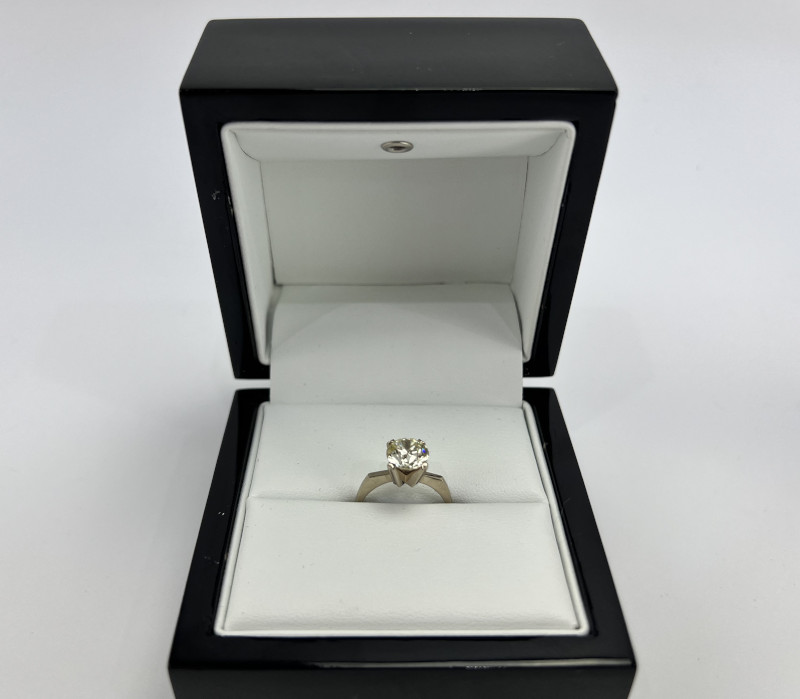Diamonds are a girl’s best friend. But contrary to popular belief, sparkling diamonds and crystal clear-cut stones are not just made for girls – with diamonds now sitting as one of the most highly coveted investment purchases of this generation.
In this blog, we’re taking a closer look at the immense value of diamonds both to investment buyers and collectors – considering their worth, how stable and reliable they are for investors, and how you can get involved in the diamond investment market with the help of Love Luxury.
History of the diamond industry
A great deal of the value that is found in diamonds comes from the process through which it becomes sale ready – transitioning from a mined material into something worthy of an engagement ring or a sparkling gift. Created naturally within the very core of the Earth, diamonds are the product of intense heat and pressure deep inside the earth – rising to the surface violently where they lie until they are exposed naturally or mined by man.
When a diamond is first discovered, it is not perfectly shiny and clear cut, this is called an uncut diamond – it then undergoes a great deal of work to reveal its true potential and beauty. While diamonds have been present within the trade industry since somewhere deep in our history, likely originating in India where diamonds were found in streams and rivers, it wasn’t until the 1400s that diamonds began to be seen as accessories and high-status symbols by the elite and wealthy across Europe.
To look at diamonds today, there are a number of factors which affect the value of any individual piece – and it’s these which impact its investment potential as well as its value on the resale market.
Whether or not a diamond is graded is arguably one of the most important things that any buyer will want to know. As such, if you are considering diamonds as an investment or as part of your investment portfolio, ensuring that they are graded is key to securing long-lasting value.
In order to get your diamonds graded, you need to recognise and know about the GIA – something which we will go into in the next section of this blog. The GIA is recognised as the world leader in diamond grading and is a non-profit organisation that values unmounted diamonds only. For those who want to gain an official valuation and grading for a ring or mounted diamond, this needs to be de-mounted by a reputable company before being sent off to the GIA.
Love Luxury is one such organisation that can help, and that will protect your diamond.
What is the GIA?
The GIA is the Gemological Institute of America and was set up in 1931 as the official body through which the founder could cite and share his knowledge on diamonds. The founder of the GIA, Robert M Shipley, undertook a course on diamonds in the UK and turned this knowledge into a means of raising the standards of the diamond and jewellery industry.
As such, the GIA offered a way for Shipley to create courses for other individuals to be able to recognise and grade diamonds based on their clarity and other distinguishing features. In 1934 the GIA established the Modern Jewellers Loop and then later created the “Four C’s” which all impact the value of any and every diamond.
What you need to know about the diamond colour scale
The diamond colour scale does not mean much to the naked eye, however when it comes to grading a diamond the colour and each gem’s position on the sliding scale are vastly important.
The scale runs from D to Z, with anything beyond Z recognised as a fancy colour diamond rather than a clear diamond. D, E, and F colour-graded diamonds are crystal clear or termed ‘colourless’, with the stone growing murkier and ‘more colourful’ as you slide down the scale.
What you need to know about the diamond clarity scale
Clarity boasts a similar sliding scale to the colour however it considers any and all flaws within the diamond which impact the ability to see through it like glass.
A flawless diamond sits at one end of the scale, while the other end is termed I3 which is “Included” – that is, multiple inclusions and marks in the stone. It is worth noting that these marks are often only obvious under the right conditions, such as through a loupe, so you need to ensure that the clarity is assessed by a formal body to get the best grading.
What you need to know about the diamond cut scale
The diamond cut scale is measured from Excellent to Poor, with five categories in total. This particular assessment considers how well it has been cut.
What you need to know about the diamond carat weight scale
Diamonds that are sent to the GIA are generally above 0.5 carats, however, they will grade any diamond that is weighted 0.15 carats and above.
The carat scale is what measures the size of the diamond, with a GIA-rated carat certificate an important thing to look out for when buying any diamond as an investment.
Is it worth investing in diamonds?
In short, yes. Diamonds are present in and around some of the best jewellery brands in the world – including Van Cleef & Arpels, Tiffany, Cartier, and many more than we offer here at Love Luxury. What this means is that not only are diamonds more readily available now than ever before, but they are accessible as jewellery pieces which belong to and are marked as part of some of the most coveted brands in the market – further adding to their value and status as high-value investments.
Receiving the correct certification from the GIA is crucial if you want to invest in diamonds and ensure their long-term potential, with Love Luxury able to send your diamonds off on your behalf and ensure optimum safety.
